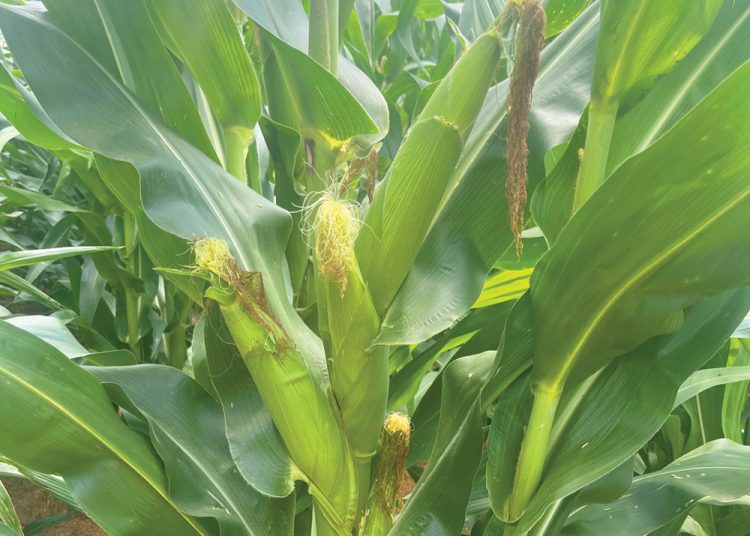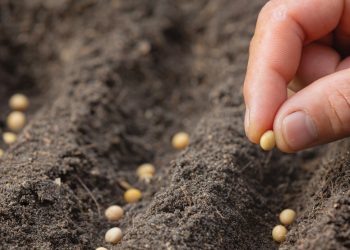
Phosphorus (P) is a key element in crop production. It is a macronutrient that is an essential component of soil fertility programmes. It is applied to agricultural land as either inorganic or organic fertiliser to meet crop nutrient requirements.
South African soils have been recorded to have less phosphorus levels than in the early 19th century due to the associated parent material from which soils originate and the subsequent management practices of the soil.
Since P is necessary for the growth of strong root systems and plays a role in converting solar energy into chemical energy during photosynthesis, it is the second-most important macronutrient for the production of the majority of field crops, including maize (Poswa, 2016).
Different sources of P affect the soil P availability and the resulting crop yield differently, and this can moderate the P deficiency. Organic manure can be used as a source of soil-available P to replenish soil P deficiencies (Ahmed et al., 2019).
Organic manures help to improve the soil’s physical, chemical and biological properties, thus improving nutrient storage and its availability to crops. A growing population places a rising demand on food to produce more grains per unit than in the past, as all of the available high-quality soil is under crop production.
Several studies, including the reports by Agbede et al. (2008) and Muhammad & Khattak (2009), have indicated that organic manures may increase the soil fertility status. They also improve the crop production potential, possibly by altering soil’s physical and chemical properties, including nutrient bioavailability, soil structure, water holding capacity, cation exchange capacity, soil pH, microbial community and activity.
It is known that fertiliser management approaches are aimed at improving the crop yield and feeding the ever-growing population. However, the price of chemical fertilisers has drastically increased, making it difficult for some producers to supply their crop with sufficient nutrition.
The question is: Can organic manure be used as a crop nutrient source for fertiliser programmes, more especially as a source of soil-available P in soil with a low P value?
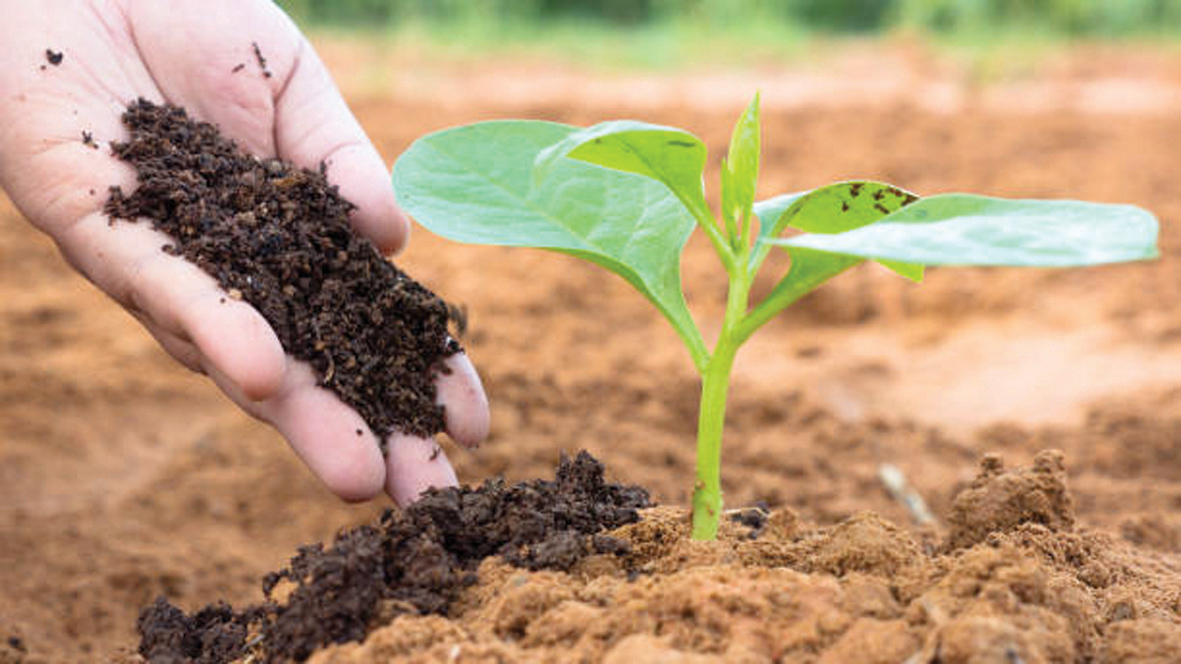
Source: https://www.istockphoto.com/photos/organic-manure
Effect on soil and maize yield
Although previous studies have assessed the impact of organic fertilisers on the availability of P, few studies have employed P-based application rates (Mnthanbala et al., 2022).
Additionally, these studies measured the available P in the soil after the crops had been harvested. Organic fertilisers were occasionally applied to assess their ability to supply plant nutrients. Consequently, application rates were not based on nutrient requirements. Whether organic manure/fertiliser was applied at a certain rate or not, it always boosted the production of crops.
Furthermore, organic manure addition increased the crop yield by enhancing the soil-available P pool (Xin et al., 2015). Komiyama et al. (2014) found 90 mg/kg available P in the soil when compost was applied based on P, and 115 mg/kg available P when compost was applied based on nitrogen (N).
According to El Sheikha (2016), an increased crop yield could be attributed to an increase in the soil-nutrient reserve in cases where inorganic fertiliser was replaced by organic manure. Manure addition can boost microbial activity and increase soil-nutrient availability by increasing the soil pH due to manure alkalinity, thus reducing lime application rates in acidic soils.
Soil P is very sensitive to the pH. The P availability to plants decreases in acidic soil due to P fixation with acidic cations such as aluminium (Al) and iron (Fe). As a result, monitoring and regulating P under various long-term fertilisation methods is required to ensure a sustainable yield on crops like maize. This will also lead to an increase in P use efficiency.
Mineral fertiliser provides easily accessible P for plant uptake, but the overuse thereof could lead to reduced phosphorus usage efficiency (PUE). This increases the accumulation of surplus soil P, which affects the plant P uptake (Xin et al., 2017).
Several studies have shown that organic P increases accessible P in soils and promotes P uptake by plants, while preserving soil pH at a favourable range for nutrient uptake.
There are reports of slow P release from organic P sources during the early weeks after planting, which may affect plant growth and production as most plants need P during the early growth stages, e.g., wheat and maize (Römer and Schilling,1986).
Literature provides evidence that using organic sources of P improves PUE, although there is no consistency in the results because different P sources affect the PUE of crops differently.
However, Mnthanbala (2022) evaluated PUE derived from market waste compost and co-compost of faecal sludge and market waste to determine its efficacy as a fertiliser to meet crop demands on maize production.
Their results showed that the available P (between 31 mg/kg and 38 mg/kg) was released during the early weeks of planting (Graph 1), between three to nine weeks after planting, and this has subsequently improved the maize yield significantly (Mnthanbala, 2022).
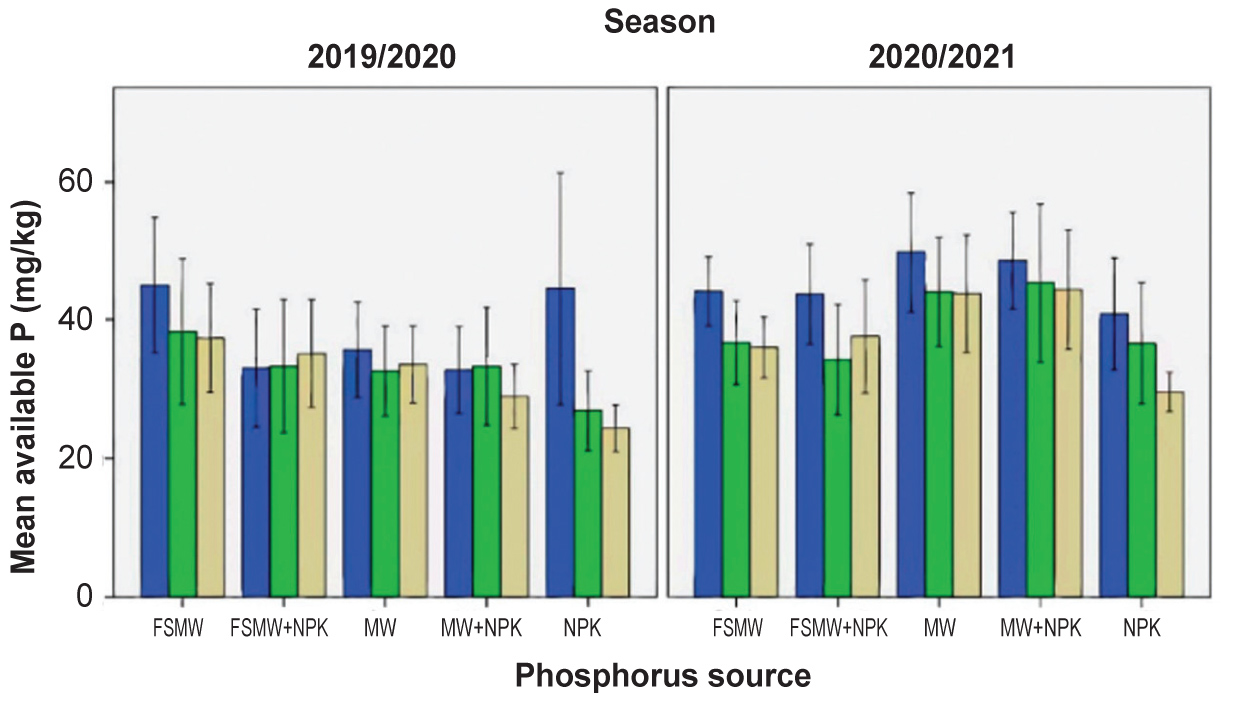
Healthier maize crops are often associated with balanced nutrients in the soil in the form of N:P:K (Photo 2A), which subsequently improve the yield produced when proper soil management, including proper fertilisation programmes, is practised in the field.
The application of organic manure in the pre-season will often ensure adequate amounts of nutrients in the early growing period of the crop. Hence, plants grown with organic manure accumulate more P than without organic amendments. Plants with a P deficiency will typically exhibit symptoms like purple or reddish discolouration, particularly on older leaves and leaf margins (Photo 2B).
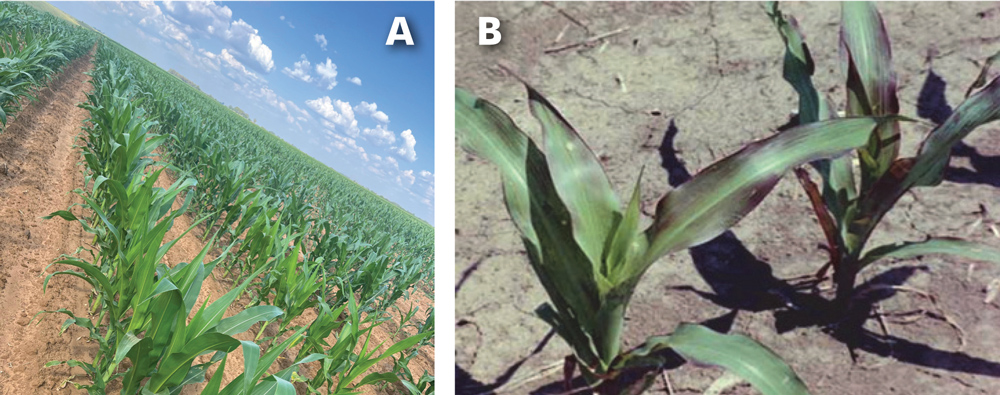
Summary
P is an essential nutrient, both as part of several key plant structure compounds and as a catalyst of numerous key biochemical reactions in plants. When applied to the soil in organic forms, it will be mineralised into inorganic forms that are available for plant uptake. Organic fertiliser/manure is a source of soil P when applied to the soil and this manure is also rich in carbon.
Manure additions result in the accumulation of organic carbon, which increases microbial biomass, affects the organisation of the microbial community and increases functional diversity.
Increased microbial biomass and diversity improve the soil quality because soil micro-organisms play an important role in nutrient cycling. They catalyse the breakdown of organic compounds and convert the phosphorus (P) and other nutrients found in manures into plant-available inorganic forms.
For optimal use of organic manure, it is recommended that it is analysed for the specific nutrient content before use to avoid over- or under-fertilisation – particularly P and potassium (or K) – as the composition of different manure sources often differs greatly.
Although chicken manure is best known for its P-rich content, a well-balanced and integrated use of organic and inorganic nutrient sources may help to maintain crop productivity.
References
- Agbede TM, Ojeniyi SO and Adeyemo AJ, 2008. Effect of poultry manure on soil’s physical and chemical properties, growth and grain yield of sorghum in southwest Nigeria. American-Eurasian Journal for Sustainable Agriculture, 2: 72-77
- Ahmed W, Huang J, Liu K, Qaswar M, Khan MN, Chen J, Sun G, Huang Q, Liu Y and Liu G, 2019. Changes in phosphorus fractions associated with soil chemical properties under long-term organic and inorganic fertilisation in paddy soils of southern China. PLoS ONE 2019, 14
- El Sheikha AF, 2016. Mixing manure with chemical fertilisers, why? And what is after? Nutrition Food Technology, 2, 1-5
- Gomez E, Ferreras L and Toresani S, 2006. Soil-bacterial functional diversity as influenced by organic amendment application. Bioresource Technology, 97, 1484-1489
- Jamil M, Qasim M and Umar M, 2006. Utilisation of sewage sludge as organic fertiliser in sustainable agriculture. Journal of Applied Science, 6, 531-535
- Komiyama T, Ito T and Saigusa M, 2014. Effects of phosphorus-based application of animal manure compost on the yield of silage corn and on soil-phosphorus accumulation in an upland Andosol in Japan. Journal of Soil Science and Plant Nutrition, 60, 863-873
- Mnthanbala F, Tilley E, Tyrrel S and Sakrabani R, 2022. Effect of various organic fertilisers on phosphorus mineralisation, use efficiency and maize yield. Resources, 11(10), 86
- Muhammad D and Khattak RA, 2009. Growth and nutrient concentration of maize in press-mud treated saline-sodic soils. Soil Science and Environment, 28, 145-155
- Poswa, ZL, 2016. Factors affecting phosphorus requirements for the soils of South African sugar industry. University of KwaZulu-Natal, South Africa
- Römer W and Schilling G, 1986. Phosphorus requirements of the wheat plant in various stages of its lifecycle. Plant and Soil, 91, 221-229
- Shen J, Cui Z, Miao Y, Mi G, Zhang H, Fan M, Zhang C, Jiang R, Zhang W and Li H, 2013. Transforming agriculture in China: From solely high yield to both high yield and high resource use efficiency. Global Food Security, 2, 1-8
- Van Zyl JP, 1926. Phosphorus deficiency in South African soils and vegetation. South African Journal of Science, 23, 244-25
- Xin X, Qin S, Zhang J, Zhu A, Yang W and Zhang X, 2017. Yield, phosphorus use efficiency and balance response to substituting long-term chemical fertiliser use with organic manure in a wheat-maize system. Field Crops Research, 208, 27-33



